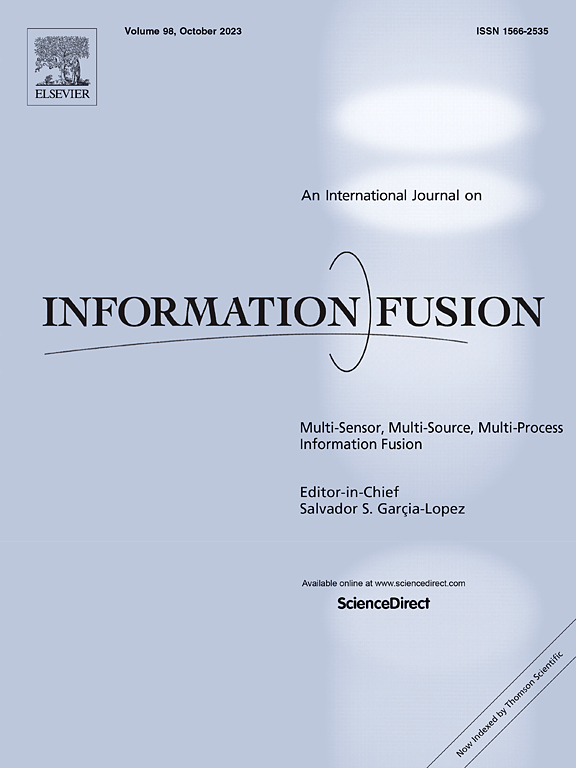使用一致和特定的深度子空间学习从空间多组学数据中识别空间域
IF 15.5
1区 计算机科学
Q1 COMPUTER SCIENCE, ARTIFICIAL INTELLIGENCE
引用次数: 0
摘要
空间组学技术的快速发展彻底改变了同时捕获多组学数据和空间信息的能力,为组织结构和细胞异质性提供了前所未有的见解。空间域识别是空间组学分析的基本步骤,因为它有助于描述功能组织区域。然而,大多数现有方法都是为空间单组学数据量身定制的,在扩展到空间多组学环境时面临着很大的局限性。在空间结构化数据中整合跨多个组学的一致和互补信号仍然是一个关键挑战。在这项研究中,我们提出了一个深度子空间学习框架SpaMICS,该框架旨在从空间多组学数据中识别空间域。SpaMICS捕获空间依赖关系和潜在的点间关系,以学习每个组的高级表示。为了增强信息集成,我们引入了一个子空间学习模块,该模块明确地分离了组学中一致和互补的信息。此外,我们结合了双重约束来增强信息提取:低秩约束强调组学之间信息的一致性,判别约束促进互补信息的提取。在五个现实世界的空间多组学数据集(包括空间转录组学-蛋白质组学和空间转录组学-表观基因组学数据)上进行的大量实验表明,SpaMICS始终优于现有的方法,有效地整合了多组学数据,以实现准确的空间域识别。本文章由计算机程序翻译,如有差异,请以英文原文为准。
Identifying spatial domains from spatial multi-omics data using consistent and specific deep subspace learning
The rapid advancement of spatial omics technologies has revolutionized the ability to simultaneously capture multi-omics data along with spatial information, offering unprecedented insights into tissue architecture and cellular heterogeneity. Spatial domain identification is a fundamental step in spatial omics analysis, as it facilitates the delineation of functional tissue regions. However, most existing methods are tailored for single omic data and face substantial limitations when extended to spatial multi-omics contexts. Integrating consistent and complementary signals across multiple omics within spatially structured data remains a key challenge. In this study, we propose SpaMICS, a deep subspace learning framework designed for spatial domain identification from spatial multi-omics data. SpaMICS captures spatial dependencies and latent inter-spot relationships to learn high-level representations for each omic. To enhance information integration, we introduce a subspace learning module that explicitly disentangles consistent and complementary information across omics. Furthermore, we incorporate dual constraints to enhance information extraction: a low-rank constraint to emphasize consistent information across omics and a discriminative constraint that facilitates the extraction of complementary information. Extensive experiments on five real-world spatial multi-omics datasets, including spatial transcriptomics–proteomics and spatial transcriptomics–epigenomics data, demonstrate that SpaMICS consistently outperforms existing approaches, effectively integrating multi-omics data for accurate spatial domain identification.
求助全文
通过发布文献求助,成功后即可免费获取论文全文。
去求助
来源期刊

Information Fusion
工程技术-计算机:理论方法
CiteScore
33.20
自引率
4.30%
发文量
161
审稿时长
7.9 months
期刊介绍:
Information Fusion serves as a central platform for showcasing advancements in multi-sensor, multi-source, multi-process information fusion, fostering collaboration among diverse disciplines driving its progress. It is the leading outlet for sharing research and development in this field, focusing on architectures, algorithms, and applications. Papers dealing with fundamental theoretical analyses as well as those demonstrating their application to real-world problems will be welcome.
 求助内容:
求助内容: 应助结果提醒方式:
应助结果提醒方式:


